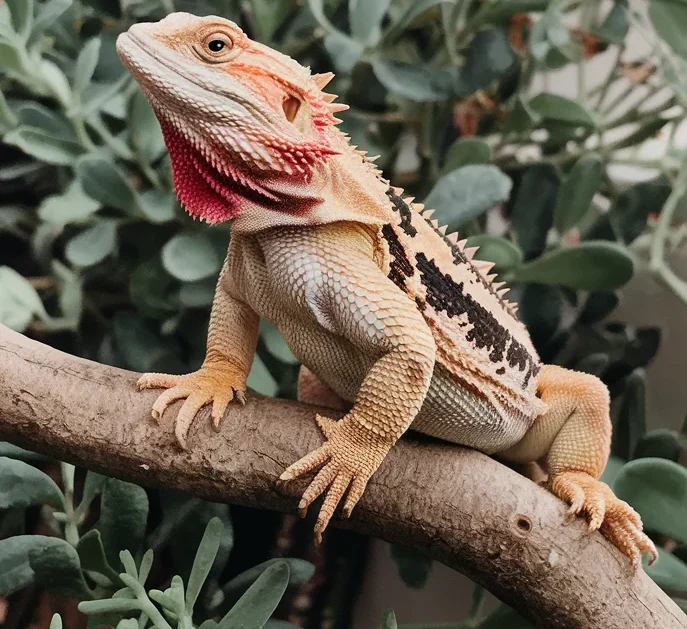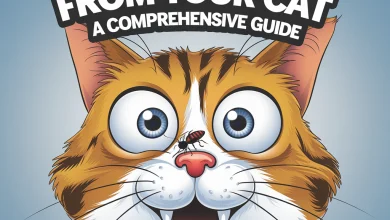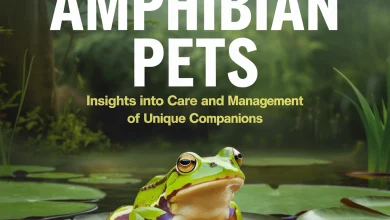Bearded Dragon: The Friendly and Fascinating Pet Lizard

Bearded dragons are one of the most popular reptiles for pet owners due to their friendly nature, unique appearance, and relatively easy care requirements. Known for their distinctive “beard” of spiky skin under their chin, these dragons make excellent pets for beginners and experienced reptile enthusiasts alike. If you’re thinking about bringing a bearded dragon into your home, here’s everything you need to know about caring for one of these fascinating lizards.
1. Why Bearded Dragons Make Great Pets
Bearded dragons are often praised for their docile nature and interactive personalities. Here are some of the top reasons they’re a popular pet choice:
- Friendly and Tame: Bearded dragons are known for being gentle and easy to handle. They often tolerate human interaction well and can even seem to enjoy being petted or held.
- Low Maintenance: Compared to other reptiles, bearded dragons are relatively low maintenance, making them a great choice for first-time reptile owners.
- Interactive and Curious: These lizards are curious about their surroundings and can be quite active. They often observe what’s happening around them and may even interact with their owners in small ways, such as following movements or responding to feeding times.
- Variety of Colors: Bearded dragons come in a wide range of colors and patterns, from vibrant oranges and reds to more muted browns and yellows, adding to their visual appeal.
2. Types of Bearded Dragons
There are several species of bearded dragons, but the most common one kept as a pet is the Central Bearded Dragon (Pogona vitticeps). Here’s a brief overview of other types:
- Dwarf Bearded Dragon: A smaller species that is not as commonly kept as a pet but still makes a great companion for those with limited space.
- Inland Bearded Dragon: Similar to the central bearded dragon but typically found in the wild in different parts of Australia.
- Leatherback and Silkback Morphs: These are specific types of bearded dragons with unique scale patterns, offering a smoother or silkier look compared to the standard spiked appearance.
3. Setting Up a Bearded Dragon Habitat
Creating the perfect habitat for your bearded dragon is crucial to their health and happiness. Here’s what you’ll need:
- Spacious Enclosure: Adult bearded dragons need a large enclosure, with a minimum size of 40-50 gallons for one dragon. The enclosure should provide enough space for climbing, basking, and exploring.
- Basking Area and Heat Lamp: Bearded dragons are cold-blooded reptiles, so they need a heat source to regulate their body temperature. Provide a basking area with a temperature of around 95°F-110°F, while the rest of the tank should have a cooler side of around 75°F-85°F.
- UVB Lighting: UVB lighting is essential for bearded dragons to produce vitamin D3, which allows them to absorb calcium and prevent metabolic bone disease. Make sure your enclosure has a UVB bulb that covers a large part of the tank.
- Substrate: Use a safe substrate, such as reptile carpet, newspaper, or tile. Avoid loose substrates like sand, which can cause impaction if ingested.
- Decor and Climbing Areas: Bearded dragons love to climb and explore, so provide branches, rocks, or hammocks for them to perch on.
4. Diet and Feeding for Bearded Dragons
Bearded dragons are omnivores, meaning they eat both plants and insects. Here’s how to maintain a healthy diet for your dragon:
- Insects: Juvenile bearded dragons need more protein, so feed them a diet primarily of insects like crickets, mealworms, or dubia roaches. For adult dragons, insects should be offered less frequently.
- Greens and Vegetables: Leafy greens like collard greens, mustard greens, and dandelion greens should make up the bulk of an adult dragon’s diet. Other vegetables like squash and carrots can also be offered.
- Fruits (In Moderation): Occasionally, you can offer small amounts of fruit such as strawberries, blueberries, or mango as a treat.
- Calcium and Vitamin Supplements: Dust your bearded dragon’s food with calcium powder (with vitamin D3) a few times a week to support strong bones and prevent metabolic bone disease.
5. Handling and Socializing Your Bearded Dragon
Bearded dragons are one of the most handleable reptiles and can become quite tame with regular interaction:
- Early Socialization: Start handling your bearded dragon when it’s young to help it get used to human interaction. Be gentle and supportive, especially when lifting them, as their bodies are delicate.
- Calm and Gentle Handling: Bearded dragons often tolerate handling well, but always be slow and gentle. Avoid sudden movements or loud noises, as they can startle your dragon.
- Watch Their Behavior: Bearded dragons may puff out their beard or darken it when they feel threatened. If you see this behavior, give them space to calm down before trying to handle them again.
6. Health and Well-being
Bearded dragons are generally hardy, but they still require proper care to stay healthy. Here are some common health concerns:
- Metabolic Bone Disease (MBD): This is a common issue in reptiles that don’t get enough calcium or UVB exposure. Signs include soft or swollen bones, lethargy, and difficulty moving.
- Respiratory Infections: If your bearded dragon is exposed to cold or damp conditions, they can develop respiratory infections. Symptoms include wheezing, mucus around the mouth or nose, and labored breathing.
- Impaction: Bearded dragons can suffer from impaction if they ingest substrate like sand or if they eat something too large to digest. Signs include lethargy, bloating, and lack of appetite.
Regular vet check-ups and providing the right environment, diet, and care will help prevent these issues.
7. Fun Facts About Bearded Dragons
- “Waving” Behavior: Bearded dragons often perform a cute, slow “wave” with one of their front legs. This is usually a sign of submission or acknowledgment of a larger or more dominant dragon.
- Color Changes: Bearded dragons can change color slightly depending on their mood or temperature. They may become darker to absorb more heat or show brighter colors when feeling energetic.
- “Beard” Display: When threatened or stressed, bearded dragons puff out the spiky skin under their chin (their “beard”) and can turn it black to appear more intimidating.
Conclusion
Bearded dragons are friendly, curious, and easy-to-care-for reptiles that make great pets for people of all ages. With their docile nature, unique behaviors, and stunning appearance, they are a wonderful addition to any household. By providing them with the right habitat, diet, and regular socialization, you can enjoy a long and rewarding relationship with your bearded dragon.



